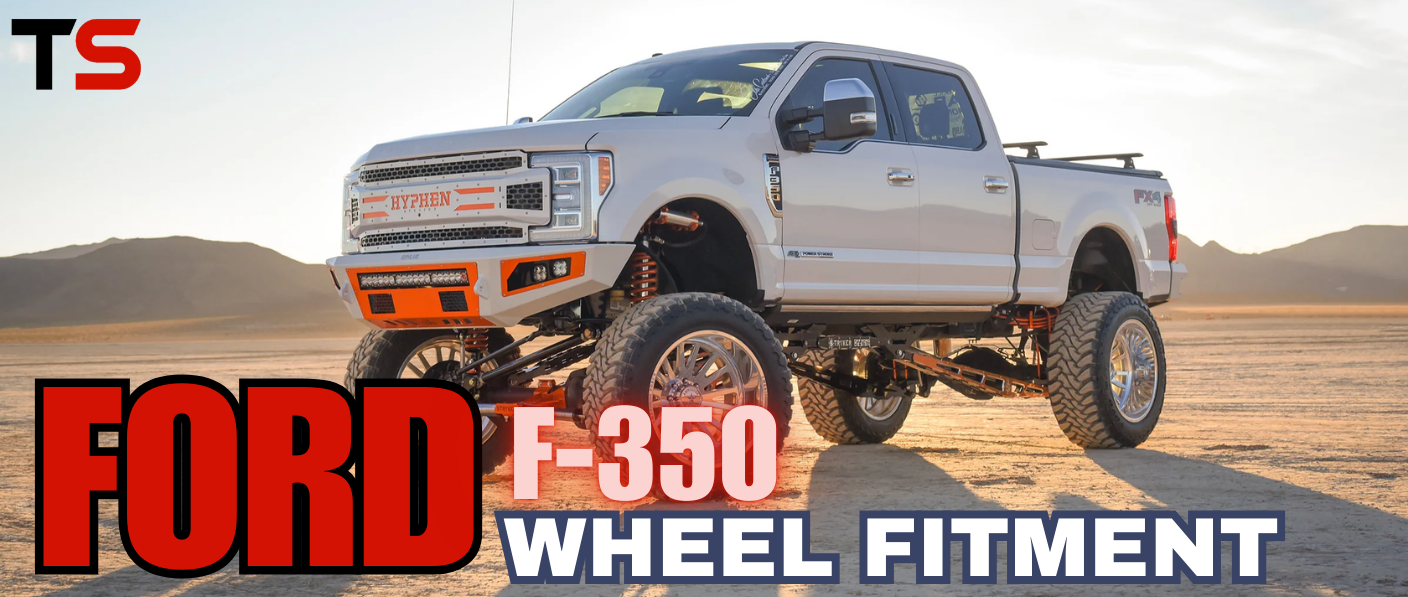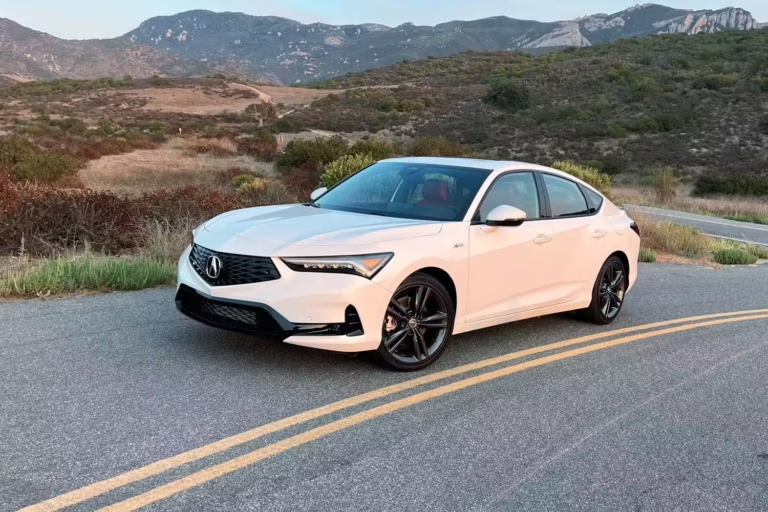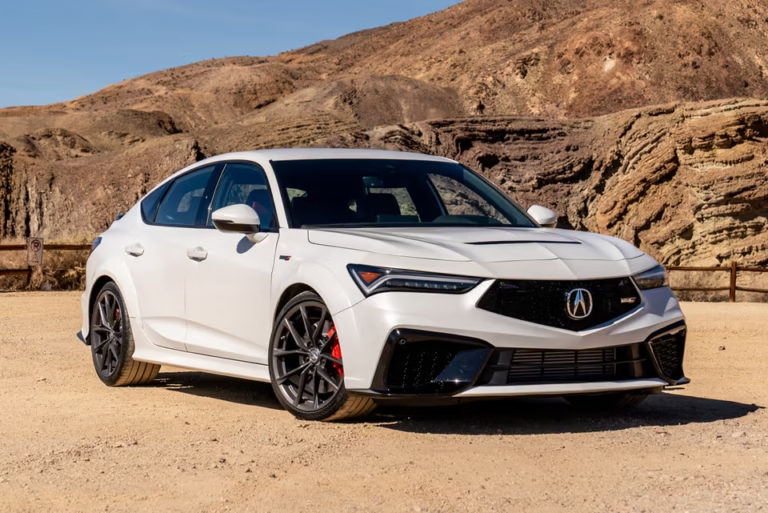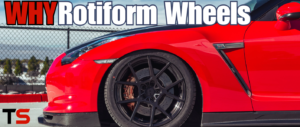Introduction
For those who require power, dependability, and adaptability, the Ford F-350 has long been a go-to option. Getting the correct wheel arrangement is essential whether you use your truck for off-roading, towing hefty cargo, or business. It’s more than just appearances; correct wheel fitment influences your ride quality, safety, and even fuel economy. From the newest model to its historical forebears, this article delves deeply into every version of the F-350. Wheel bolt patterns, rim sizes, hub bores, offsets, and appropriate tire sizes—all the knowledge you need to help you decide what best fits your setup.
Here is the Guide About: Ford F-250 Wheel Fitment Guide
Ford F-350 V (P708) Super Duty [2023–2026]
Introduced in 2023, the newest Ford F-350 Super Duty presented a dramatic redesign in both tech and architecture. Wheel fitting is crucial for both performance and comfort given increased towing capacity and better suspension geometry.
Wheel Bolt Pattern: 8×170 mm
Rim Size Range: 17″–22″
Hub Bore: 124.9 mm
Offset Range: +35 mm to +50 mm
Tire Size Range: 245/75R17 to 37×12.50R22 (with lift)
Usually, depending on trim level, factory versions have 18″ or 20″ rims. Most aftermarket setups combine 20″ or 22″ wheels, particularly when matched with leveling or raise systems. This generation can comfortably take bigger tires; nevertheless, if you’re over 35″, a raise or fender trimming may be required. The 8×170 bolt pattern is easier to source wheels since it continues over from the last generation. But especially with custom wheels, be sure to consider brake caliper clearance. Particularly in states with tight vehicle laws, keep an eye on how far your wheels push out if you are choosing severe offsets like -12 mm.
Ford F-350 IV (P558) Super Duty Facelift [2020–2023]
This updated P558 platform improved upon what was already a strong truck. Though stylistic changes were the most obvious alteration, wheel clearance was somewhat altered by small suspension adjustments.
Wheel Bolt Pattern: 8×170 mm
Rim Size Range: 17″–22″
Hub Bore: 124.9 mm
Offset Range: +35 mm to +50 mm
Tire Size Range: 245/75R17 to 37×12.50R22 (lifted)
Many owners of this vintage, either standard or aftermarket, keep to 20″ wheels. Negative offsets like -12 mm can provide that wide stance for those looking for a more aggressive appearance, but it may need fender flares to remain legal. Always double-check inner barrel clearance before purchasing aftermarket wheels, since this model has somewhat larger brake caliper size. Even a simple leveling kit improves stance and capability when matched with 35-inch or larger tires.
Ford F-350 IV (P558) Super Duty [2017–2020]
The first model of the F-350 to acquire an aluminum body helped to lower the general weight without compromising strength. Lighter weight indicated more flexible fitment choices and improved performance.
Wheel Bolt Pattern: 8×170 mm
Rim Size Range: 17″–22″
Hub Bore: 124.9 mm
Offset Range: +35 mm to +50 mm
Tire Size Range: 245/75R17 to 37×13.50R20 (with lift)
More room in the wheel wells made possible by the aluminum body construction allowed somewhat larger tires without drastic changes. Many drivers use 20×9 wheels with a +18 mm offset to keep everything neat while nevertheless providing a hefty appearance. Particularly when combined with a 2-4 inch raise, those performing off-road generally employ bigger tires and beadlock-style wheels. Like later versions, this F-350 follows the 8×170 bolt pattern and 124.1 mm hub bore, so parts interchangeability is rather strong across more recent generations.
Ford F-350 III (P473) Super Duty [2011–2016]
Still a favorite among both enthusiasts and professionals, this generation matched capability with comfort. Aftermarket wheel fitting suffered somewhat since the front suspension geometry changed somewhat and the frame was stiffened.
Wheel Bolt Pattern: 8×170 mm
Rim Size Range: 17″–22″
Hub Bore: 124.9 mm
Offset Range: +35 mm to +50 mm
Tire Size Range: 245/75R17 to 37×12.50R20 (with mods)
Usually featuring 17″ or 18″ rims, stock configurations sometimes included all-terrain or mud-terrain tires combined with 20″ wheels depending on aftermarket additions. Larger tires above 35″ benefit from leveling kits or lifts; the stock offset maintains everything in line without rubbing problems. If you are choosing bigger spokes or deep lip designs, brake clearance still is a major factor.
Ford F-350 II (P356) Super Duty [2008–2010]
This period of the F-350 included stiffer suspension and bigger brake components, which somewhat affected wheel fitment options. Known for its robust posture and recognizable grille design.
Wheel Bolt Pattern: 8×170 mm
Rim Size Range: 17″–22″
Hub Bore: 124.9 mm
Offset Range: +35 mm to +50 mm
Tire Size Range: 245/75R17 to 35×12.50R20 (with mods)
This model’s wheel wells can handle mild lift packages and larger than stock tires. Moving from factory 17″ wheels to 20×10 with a little negative offset for a wider stance is a frequent modification. Wheels from more recent F-350s can occasionally be swapped in easily using the same bolt pattern and hub bore as later versions.
Ford F-350 I (PHN131) Super Duty [1999–2007]
This signified a change toward more solid commercial-grade capability and was the first F-350 sporting the “Super Duty” badge. Its architecture prepared the ground for next generations.
Wheel Bolt Pattern: 8×170 mm
Rim Size Range: 17″–22″
Hub Bore: 124.9 mm
Offset Range: +35 mm to +50 mm
Tire Size Range: 235/85R16 to 35×12.50R18 (with lift)
Although most factory models came with 16″ wheels, upgrading to 18″ or 20″ has become a regular practice for improved performance and looks. Larger tires might call for both a lift and trimming to prevent rubbing given older suspension design. This generation brought the 8×170 bolt pattern still in use today, which provides owners with a broad choice of modern wheels.
Ford F-350 VIII [1992–1997]
Modern wheels need more specific work and pre-super duty F-350s had a different bolt pattern. With simple style and less technology distractions, this generation was centered around heavy-duty utility.
Wheel Bolt Pattern: 8×6.5″ (8×165.1 mm)
Rim Size Range: 16″–18″
Hub Bore: 124.9 mm
Offset Range: 0 mm to +25 mm
Tire Size Range: 235/85R16 to 33×12.50R17 (with lift)
Older models only have the 8×6.5 bolt pattern, hence wheel options are limited compared to the later 8×170 configurations. Still, several aftermarket companies create wheels for this specification. While going full off-road with 33-inch tires and suspension improvements, owners sometimes opt for 16×8 wheels with modest all-terrains for a clean look.
Ford F-350 VII [1987–1991]
Built with functionality in mind, these models lacked the contemporary amenities or beauty of more recent trucks. Still, they are a choice for farm usage and restoration.
Wheel Bolt Pattern: 8×6.5″ (8×165.1 mm)
Rim Size Range: 16″–18″
Hub Bore: 124.9 mm
Offset Range: 0 mm to +25 mm
Tire Size Range: 215/85R16 to 33×12.50R16
Depending on the brand, wheel changes for this generation can call either spacers or hub-centric rings to fit correctly. Although you have few choices for rim sizes, 16″ wheels—especially steelies—which are preferred for off-road and towing projects have a strong market.
Ford F-350 VI [1980–1986]
Many aficionados value the vintage look these trucks have. Though the factory configurations are simple, they can be carefully improved.
Wheel Bolt Pattern: 8×6.5″ (8×165.1 mm)
Rim Size Range: 16″–18″
Hub Bore: 124.9 mm
Offset Range: 0 mm to +25 mm
Tire Size Range: 215/85R16 to 31×10.50R15
Finding wheels for this era can be more difficult, particularly considering older brake systems and smaller fender clearance. Still, looks and use depend much on a well-made 16×8 wheel with all-terrain rubber.
Ford F-350 V Facelift [1973–1979]
Collectors and off-road aficioners have a solid following for this generation. The right wheel arrangement might revive the squared-off design and tough structure of the vehicle.
Wheel Bolt Pattern: 8×6.5″ (8×165.1 mm)
Rim Size Range: 16″–18″
Hub Bore: 124.9 mm
Offset Range: 0 mm to +25 mm
Tire Size Range: 215/85R16 to 31×10.50R15
Although many factory trucks had 16 steel wheels, aftermarket builders may choose classic off-road designs using deep dish alloys and aggressive tire patterns. Particularly with older suspensions, modifications could be required to make everything fit perfectly.
Ford F-350 IV Facelift [1967–1972]
Simplicity and mechanical purity of this early F-350 model are much appreciated. Your wheel choice defines the character of the truck whether you are restoring one or maintaining it operating strong.
Wheel Bolt Pattern: 8×6.5″ (8×165.1 mm)
Rim Size Range: 16″–18″
Hub Bore: 124.9 mm
Offset Range: 0 mm to +25 mm
Tire Size Range: 215/85R16 to 31×10.50R15
Given the age of this truck, wheel changes usually call for some special fitting. That can imply running spacers or applying lug-centric mounting. While increasing practicality, tall-profile tires on steel wheels help to preserve the vintage appearance.
Conclusion
Choosing the correct wheels for your Ford F-350 is more than just a decorative decision; it’s a functional one that immediately affects the capability and safety of your vehicle, whether your upgrade is for performance, appearance, or utility. Knowing your bolt pattern, offset, and clearance guarantees the ideal fit and helps you avoid expensive mistakes from the newest Super Duty models to old classics. As usual, especially when changing generations or suspension, double-check wheel specs before purchasing. Your F-350 will tackle any job you toss it at and look great with the correct configuration.
FAQs
1. Can I use wheels from a newer F-350 on an older one?
Indeed, only if both generations have the identical bolt pattern—8×170 or 8×6.5″— will this apply. Particularly if braking and suspension systems vary, you will also need to confirm hub bore and offset compatibility.
2. What’s the largest tire I can run without a lift on my F-350?
The model year will determine this; however, generally 33″ tires will fit most contemporary F-350s without a raise. Approaching 35″ or more calls for either leveling systems or suspension lifts.
3. What’s the benefit of negative offset wheels?
Negative offset wheels improve stability and give a more forceful appearance by pushing the tire outward for a broader stance. To stay street legal, they might, however, call for fender flares or trimming.
4. Can I use universal wheels on a standard F-350?
Dually wheels call for particular axle configurations and spacing. Without major changes, they are incompatible with single rear wheel (SRW) trucks.
5. Do I need hub-centric rings when installing aftermarket wheels?
Once in a bit. Hub-centric rings guarantee a tight fit and stop vibrations if the center bore of the wheel is greater than the hub bore of your F-350.







